Introduction to the Isd1820 Voice Recorder Module
The Isd1820 is a powerful and versatile voice recorder module that allows users to record, store, and playback audio with ease. This module is widely used in various applications, such as voice memos, interactive projects, and audio-based systems. In this comprehensive guide, we will explore the features, specifications, and usage of the Isd1820 voice recorder module.
What is the Isd1820 Voice Recorder Module?
The Isd1820 is a single-chip voice recording and playback module that offers high-quality audio storage and reproduction. It is designed to be user-friendly and can be easily integrated into various projects, making it a popular choice among hobbyists, educators, and professionals alike.
Key Features of the Isd1820 Voice Recorder Module
- Single-chip voice recording and playback solution
- Non-volatile flash memory for audio storage
- Supports recording durations up to 20 seconds
- Multiple sampling rates for different audio qualities
- Built-in microphone and speaker amplifier
- Simple pushbutton interface for recording and playback control
- Low power consumption and wide operating voltage range
Specifications of the Isd1820 Voice Recorder Module
To better understand the capabilities of the Isd1820 voice recorder module, let’s take a closer look at its specifications:
| Specification | Value |
|---|---|
| Supply Voltage | 2.4V to 5.5V |
| Sampling Rates | 4, 6.4, 8, 16 kHz |
| Recording Duration | Up to 20 seconds |
| Memory Type | Non-volatile flash |
| Audio Output Power | 80 mW @ 16 Ω |
| Microphone Sensitivity | -42 dB |
| Dimensions | 34 x 22 x 5 mm |
Sampling Rates and Recording Duration
The Isd1820 supports multiple sampling rates, allowing users to choose between different audio qualities and recording durations. The following table summarizes the available sampling rates and their corresponding recording durations:
| Sampling Rate | Recording Duration |
|---|---|
| 4 kHz | 20 seconds |
| 6.4 kHz | 12 seconds |
| 8 kHz | 10 seconds |
| 16 kHz | 5 seconds |
Higher sampling rates offer better audio quality but reduce the maximum recording duration. Users can select the appropriate sampling rate based on their specific requirements and project constraints.
Getting Started with the Isd1820 Voice Recorder Module
Hardware Setup
To start using the Isd1820 voice recorder module, you’ll need to connect it to a power source and a microcontroller or development board. The module has the following pins:
- VCC: Power supply (2.4V to 5.5V)
- GND: Ground
- REC: Record control
- PLAYE: Playback control
- P-E: Playback-edge control
- FT: Feed-through control
- MIC: Microphone input
- SPK: Speaker output
A typical connection diagram would involve:
- Connecting VCC to the power supply (e.g., 3.3V or 5V)
- Connecting GND to the ground of the power supply and microcontroller
- Connecting REC, PLAYE, and P-E to the microcontroller’s GPIO pins
- Optionally connecting FT to the microcontroller’s GPIO pin for feed-through control
- Connecting a microphone to the MIC pin (if not using the built-in microphone)
- Connecting a speaker or audio amplifier to the SPK pin
Software Setup
To control the Isd1820 voice recorder module, you’ll need to write code for your microcontroller or development board. The exact code will depend on the specific microcontroller and programming language you are using. However, the general steps involve:
- Initializing the GPIO pins connected to the Isd1820 module
- Setting the appropriate sampling rate by configuring the FT pin
- Triggering recording by pulling the REC pin high for the desired duration
- Triggering playback by pulling the PLAYE pin high
- Controlling the playback edge (rising or falling) using the P-E pin
Here’s a simple example of how to control the Isd1820 using an Arduino:
const int REC_PIN = 2;
const int PLAYE_PIN = 3;
const int FT_PIN = 4;
void setup() {
pinMode(REC_PIN, OUTPUT);
pinMode(PLAYE_PIN, OUTPUT);
pinMode(FT_PIN, OUTPUT);
// Set sampling rate to 8 kHz
digitalWrite(FT_PIN, LOW);
}
void loop() {
// Record for 5 seconds
digitalWrite(REC_PIN, HIGH);
delay(5000);
digitalWrite(REC_PIN, LOW);
// Play the recorded audio
digitalWrite(PLAYE_PIN, HIGH);
delay(5000);
digitalWrite(PLAYE_PIN, LOW);
delay(1000);
}

Applications of the Isd1820 Voice Recorder Module
The Isd1820 voice recorder module finds applications in various fields, such as:
Voice Memos and Note-taking Devices
The Isd1820 can be used to create simple voice memo devices, allowing users to record and playback short audio notes. These devices can be standalone or integrated into larger systems, such as smart home assistants or wearable technology.
Interactive Toys and Educational Projects
The voice recording and playback capabilities of the Isd1820 make it an excellent choice for interactive toys and educational projects. For example, you can create talking plush toys, audio-based quiz games, or language learning tools that utilize recorded audio for a more engaging experience.
Audio Announcements and Alerts
The Isd1820 can be used to create audio announcement and alert systems. These systems can be used in public spaces, such as airports, shopping malls, or hospitals, to provide important information or warnings to visitors. The module’s non-volatile memory ensures that the recorded audio is retained even during power outages.
Music and Sound Effects
While the Isd1820 is primarily designed for voice recording, it can also be used to store and playback short music clips or sound effects. This can be useful in creating interactive art installations, musical toys, or adding audio feedback to various projects.
Troubleshooting and Common Issues
Recording Quality Issues
If you experience poor recording quality, consider the following:
- Ensure that the microphone is connected correctly and not damaged
- Check the power supply voltage and ensure it is within the recommended range
- Experiment with different sampling rates to find the optimal balance between audio quality and recording duration
- Reduce background noise and ensure proper microphone placement
Playback Issues
If you encounter problems with audio playback, try the following:
- Verify that the speaker or audio amplifier is connected correctly and functioning properly
- Check the wiring connections between the Isd1820 and the microcontroller or development board
- Ensure that the playback control pins (PLAYE and P-E) are toggled correctly in your code
- Confirm that the recorded audio is not corrupted or incomplete
Module Not Responding
If the Isd1820 module is not responding to commands, consider these steps:
- Double-check the wiring connections and ensure that all pins are connected correctly
- Verify that the power supply is providing the correct voltage and current
- Reset the module by temporarily disconnecting the power supply
- Review your code and ensure that the GPIO pins are initialized and controlled properly
Frequently Asked Questions (FAQ)
-
Can I change the recording duration of the Isd1820?
Yes, you can change the recording duration by selecting a different sampling rate. Higher sampling rates offer better audio quality but reduce the maximum recording duration. -
Is it possible to record and playback audio simultaneously?
No, the Isd1820 does not support simultaneous recording and playback. You can either record or playback audio at a given time. -
Can I connect an external microphone to the Isd1820?
Yes, you can connect an external microphone to the MIC pin of the Isd1820. This allows you to use a higher-quality microphone or place the microphone in a different location than the module itself. -
How can I adjust the volume of the audio playback?
The Isd1820 does not have a built-in volume control. To adjust the volume, you can use an external audio amplifier with volume control or implement a digital volume control using pulse-width modulation (PWM) on the microcontroller. -
Is the recorded audio retained when the power is disconnected?
Yes, the Isd1820 uses non-volatile flash memory to store the recorded audio. The audio data is retained even when the power is disconnected or the module is reset.
Conclusion
The Isd1820 voice recorder module is a powerful and easy-to-use solution for adding audio recording and playback capabilities to various projects. With its simple interface, non-volatile memory, and multiple sampling rates, the Isd1820 offers flexibility and reliability for a wide range of applications.
By understanding the specifications, hardware setup, and software control of the Isd1820, you can create engaging and interactive projects that incorporate high-quality audio. Whether you’re building voice memo devices, educational toys, or audio announcement systems, the Isd1820 voice recorder module is an excellent choice for bringing your ideas to life.
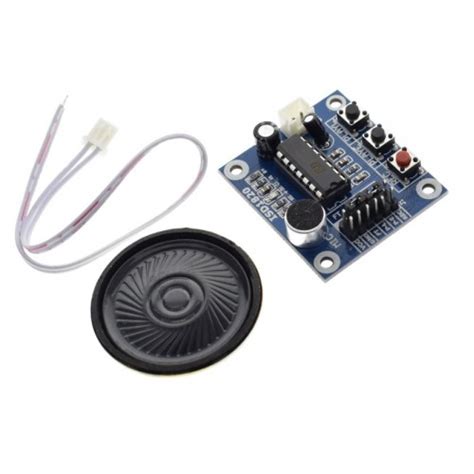
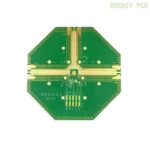
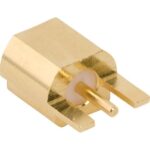
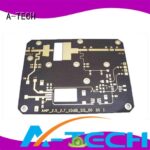
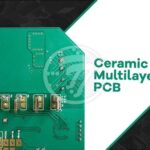
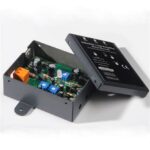
Leave a Reply